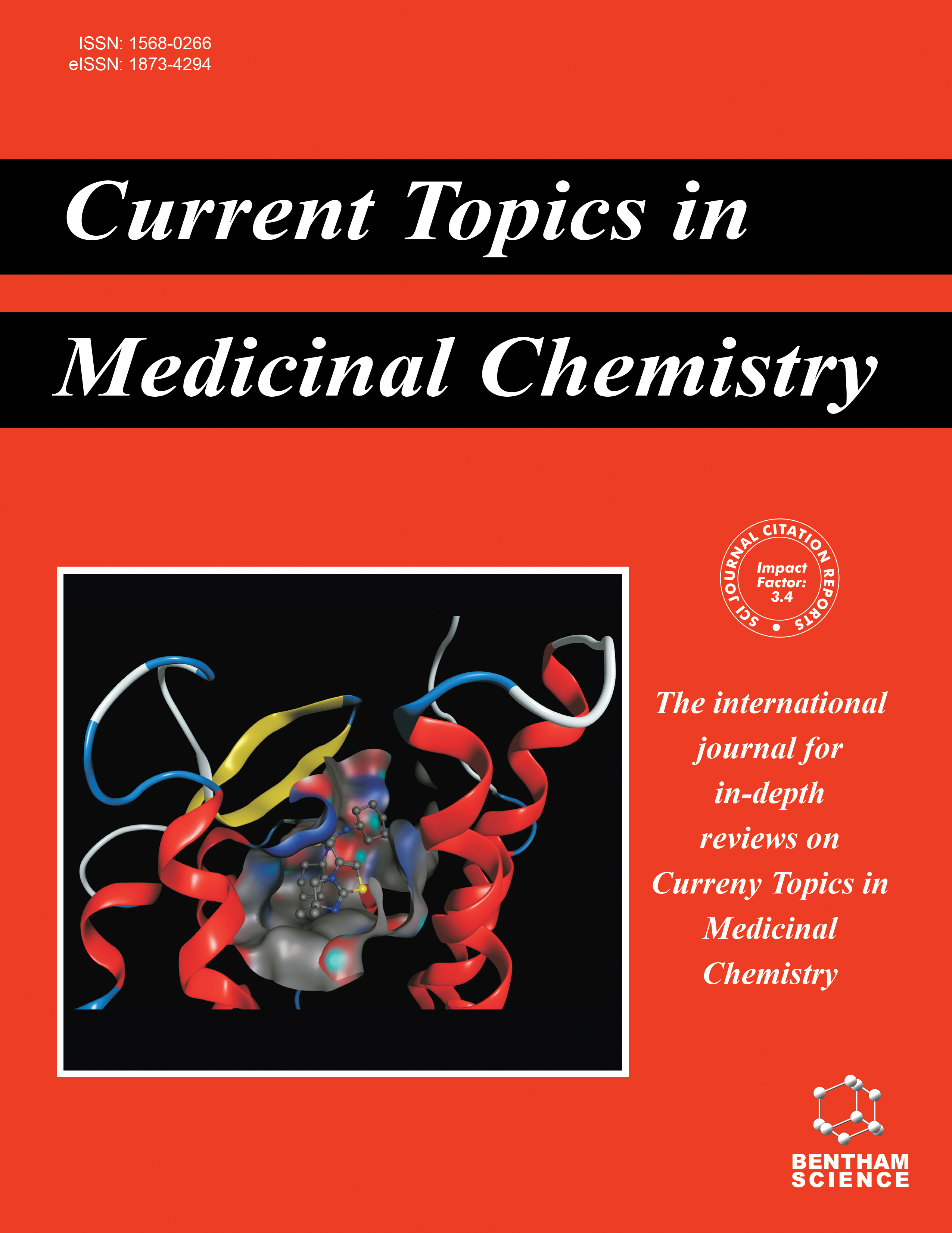- Home
- A-Z Publications
- Current Topics in Medicinal Chemistry
- Previous Issues
- Volume 25, Issue 1, 2025
Current Topics in Medicinal Chemistry - Volume 25, Issue 1, 2025
Volume 25, Issue 1, 2025
-
-
Green Synthesis of Biorelevant Scaffolds through Organocatalytic/Enzymatic Dynamic Kinetic Resolution
More LessThis review highlights major developments in the application of green organocatalytic and enzymatic dynamic kinetic resolutions (DKRs) in the total synthesis of biorelevant scaffolds. It illustrates the diversity of useful bioactive products and intermediates that can be synthesized under greener and more economic conditions through the combination of the powerful concept of DKR, which allows the resolution of racemic compou Read More
-
-
-
Role of Plant Materials with Anti-inflammatory Effects in Phytotherapy of Osteoarthritis
More LessAuthors: Małgorzata Geszke-Moritz, Gerard Nowak, Michał Moritz, Barbara Feist and Jacek E. NyczOsteoarthritis (OA) is a common chronic articular degenerative disease characterized by articular cartilage degradation, synovial inflammation/immunity, and subchondral bone lesions. Recently, increasing interest has been devoted to treating or preventing OA with herbal medicines. The mechanism of action of plant raw materials used in osteoarthrosis treatment is well documented. They are sought after Read More
-
-
-
Facile Synthesis and Applications of Flavonoid-heterocyclic Derivatives
More LessAuthors: Saba Farooq and Zainab NgainiFlavonoids belong to the polyphenol group that naturally exists in fruits, vegetables, tea, and grains. Flavonoids, as secondary metabolites, show indispensable contributions to biological processes and the responses of plants to numerous environmental factors. The bioactivity of flavonoids depends on C6-C3-C6 ring substitution patterns that exhibit bioactive antioxidant, antimicrobial, antifungal, antitumor, and anti-inflamm Read More
-
-
-
Recent Advances in Nanocatalyzed One-Pot Sustainable Synthesis of Bioactive N, N-Heterocycles with Anticancer Activities: An Outlook of Medicinal Chemistry
More LessN-heterocycles represent a predominant and unique class of organic chemistry. They have received a lot of attention due to their important chemical, biomedical, and industrial uses. Food and Drug Administration (FDA) approved about 75% of drugs containing N-based heterocycles, which are currently available in the market. N-Heterocyclic compounds exist as the backbone of numerous natural products and act as c Read More
-
-
-
Synthesis of Isatin-derived Heterocycles with Promising Anticancer Activities
More LessAuthors: Bubun Banerjee, Aditi Sharma, Arvind Singh, Manmeet Kaur and Anu PriyaIsatin or 1H-indole-2,3-dione skeleton has been playing a significant role in drug design and development. Isatin itself and many of its derivatives are widely distributed in naturally occurring bioactive compounds. Various synthetic isatin derivatives were found to possess a broad range of significant pharmacological efficacies especially anti-cancer activity against a wide variety of cancer cell lines. Interestingly, on a few oc Read More
-
-
-
Recent Developments on the Synthesis of Oxygen- and Sulfur-containing Heterocycles and their Derivatives under Visible Light Induced Reactions
More LessAuthors: Tubai Ghosh, Sougata Santra, Grigory V. Zyryanov and Brindaban C. RanuVisible-light-mediated reactions have recently emerged as a powerful strategy for the synthesis of diverse organic molecules under mild reaction conditions. Usually, the reactions are performed at room temperature and thus sensitive functional groups remain unaffected. Thus, this protocol has received intense interest from academia as well as industries. The heterocycles, in general, are of much interest because of their bi Read More
-
-
-
Hydroxamic Acids Derivatives: Greener Synthesis, Antiureolytic Properties and Potential Medicinal Chemistry Applications - A Concise Review
More LessHydroxamic acids (HAs) are chemical compounds characterized by the general structure RCONR'OH, where R and R' can denote hydrogen, aryl, or alkyl groups. Recognized for their exceptional chelating capabilities, HAs can form mono or bidentate complexes through oxygen and nitrogen atoms, rendering them remarkably versatile. These distinctive structural attributes have paved the way for a broad spectrum of medicin Read More
-
Volumes & issues
-
Volume 25 (2025)
-
Volume 24 (2024)
-
Volume 23 (2023)
-
Volume 22 (2022)
-
Volume 21 (2021)
-
Volume 20 (2020)
-
Volume 19 (2019)
-
Volume 18 (2018)
-
Volume 17 (2017)
-
Volume 16 (2016)
-
Volume 15 (2015)
-
Volume 14 (2014)
-
Volume 13 (2013)
-
Volume 12 (2012)
-
Volume 11 (2011)
-
Volume 10 (2010)
-
Volume 9 (2009)
-
Volume 8 (2008)
-
Volume 7 (2007)
-
Volume 6 (2006)
-
Volume 5 (2005)
-
Volume 4 (2004)
-
Volume 3 (2003)
-
Volume 2 (2002)
-
Volume 1 (2001)
Most Read This Month
Article
content/journals/ctmc
Journal
10
5
false
en


